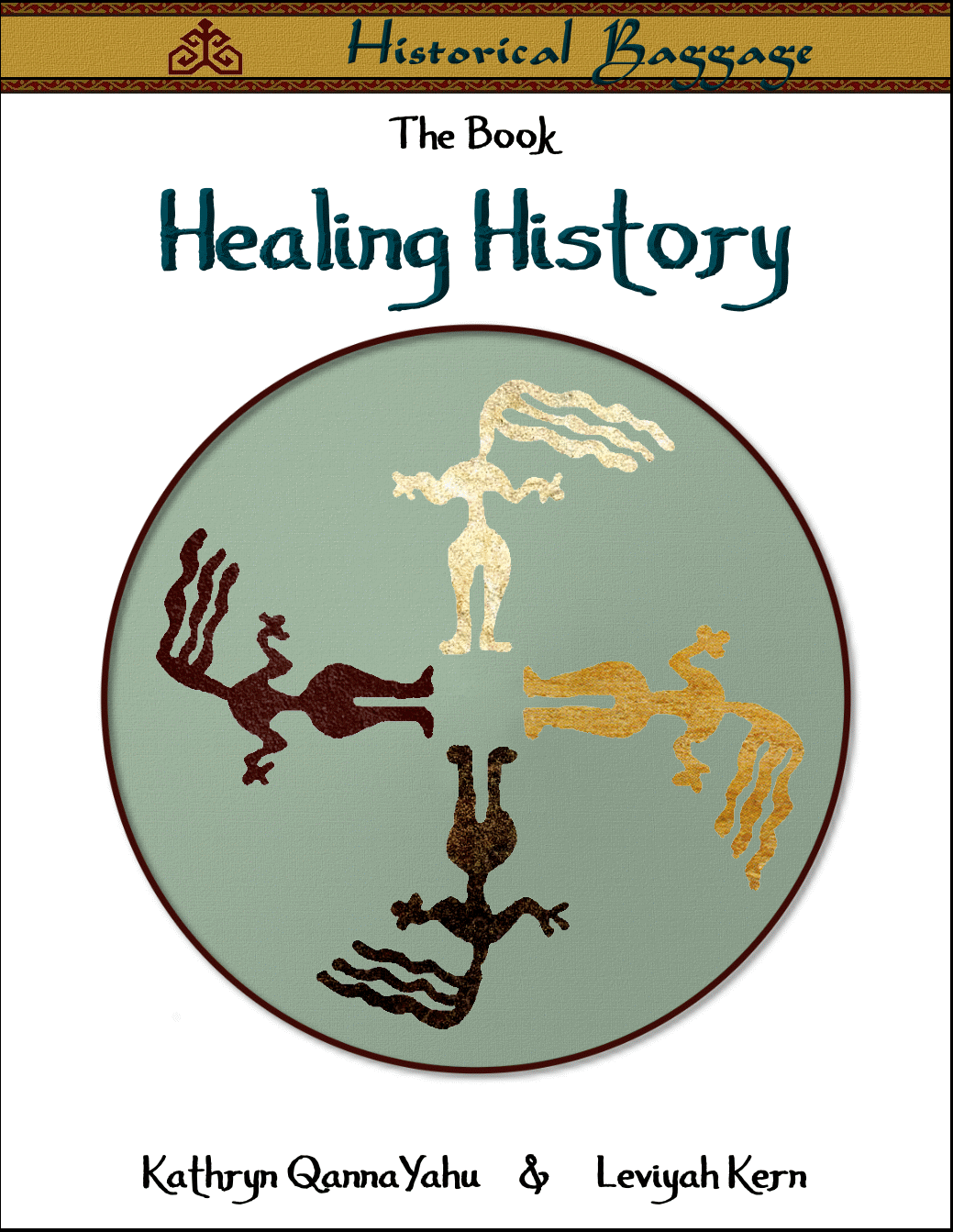

Historical Baggage: The Book, Healing History
![]()
![]()
|
The central circular design is based on an ancient Samarra bowl, dating about 5000 BCE, featuring the 4 women, rotating in the counter clockwise tawah (spinning – later known as the swastika) symbol. This is the oldest I have been able to trace this symbol, which was always used for well being. The Samarra archaeology incorporates the tawah symbol, on other artifacts, involving other elements of nature. The counter clockwise revolution is oriented toward the earth, which the ancinet matrilineal cultures were very tied to, as opposed to the clockwise revolution of the patriarchal Indo-European solar cultures. The Samarrans were the ancestors of the ancient Sumerians. While the original women were all painted in a red ochre color, I chose to use this pattern, incorporating the inclusive Puebloan creation version of Spider Woman, the creatress of all. She formed the the four races of people from the 4 colors of clay she created. I have placed them geographically, with the white to the north, the gold to the east, the dark brown/black to the south and the red to the west. These mothers are placed on a sea green background, representing the waters of creation, often associated with the primal creation accounts of the mother creating the sea and also being her place of abode. The waters also represent the necessary waters of life for the village, which occurred around springs, rivers, lakes and oceans. The water is also symbolic of the birthing waters of the mother. The circle is often associated with fertility in the ancient matrilineal cultures, being a sign of the word femina – female. Later being represented by the more ovular egg shape fertility symbol. |
